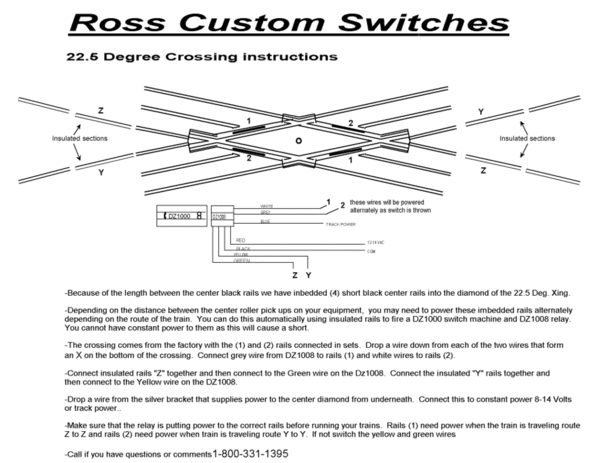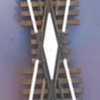Darian,
I have no pictures of the brass diamonds, what I did was to use the plastic diamond as a template and made a drawing of this template. Once the drawing was made, I cut the 1/8 inch square brass bar stock, 2 pieces, and mitered both ends to match the plastic diamond, allow sufficient length for mitering.
The next set is the most difficult, mark the midlength of each bar, clamp this brass bar in a machinists(bench vise) and use the edge thickness 1/8 inch of a rectangular steel file, hand file a diagonal slot 1/16 inch deep by 1/8 inch wide, this slot must be parallel to the mitered ends of this bar. Likewise, on the other bar, hand file a diagonal slot, 1/16 inch deep by 1/8 inch wide, this slot must be parallel to the mitered ends and note on the opposite side of the first bar. Once both bars are cut to length,ends mitered and the diagonal slot at midlength hand filed, interlock both bars at midlength, there combined thickness at the midlength slot is 1/8 inch.
Over lay this brass diamond on the plastic diamond, the important dimensions are the mitered ends of the brass bars and the plastic bars, to long or a skewed miter angle can cause wheel flange interference as the car/locomotive axles pass over this diamond. Hand file,as required, the brass bars for this clearance. Once satisfied, hold this brass diamond assembly together on the mitered ends using mini-clamps or pliers to maintain the correct angularity and flatness at the mid-length slots. I used a 200 watt soldering gun, flux and electrical solder to solder both bars together at mid length. Overlay the soldered brass diamond on the plastic diamond, if the overlay is a good match does not have to be perfect, then solder a 12 inch long 18 gauge wire one leg of this brass diamond for powering. If the angularity is off, reheat the soldered joint to the solder melting point, reset angularity, resolder and check by overlay, then solder the power wire to one leg.
Caution, when soldering the brass diamond, the soldered assembly becomes very hot, air cool before handling.
Once the brass diamond and powering wire are complete, remove the plastic diamond down to the base(top) of the plastic tie, I used .040 thick by 1/8 inch wide plastic styrene strip as a shim between the base of the brass diamond and the top of the plastic ties. I used Gorilla Super Glue to glue the styrene strip to the top of the ties, let the glue setup, centered the brass diamond for the straight and diagonal center rails and glued the brass diamond to the styrene strip.Let the glue setup over night, checked wheel flange clearance on mitered ends, if wheel flange interference is possible, use miniature file/standard file to open up the clearance by filing the appropriate end(s) of the brass diamond mitered bar ends. Drill a hole through train board for pulling the diamond power wire below the train board.








